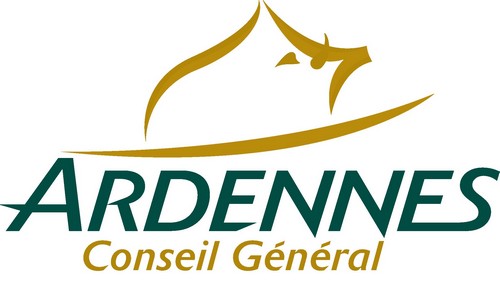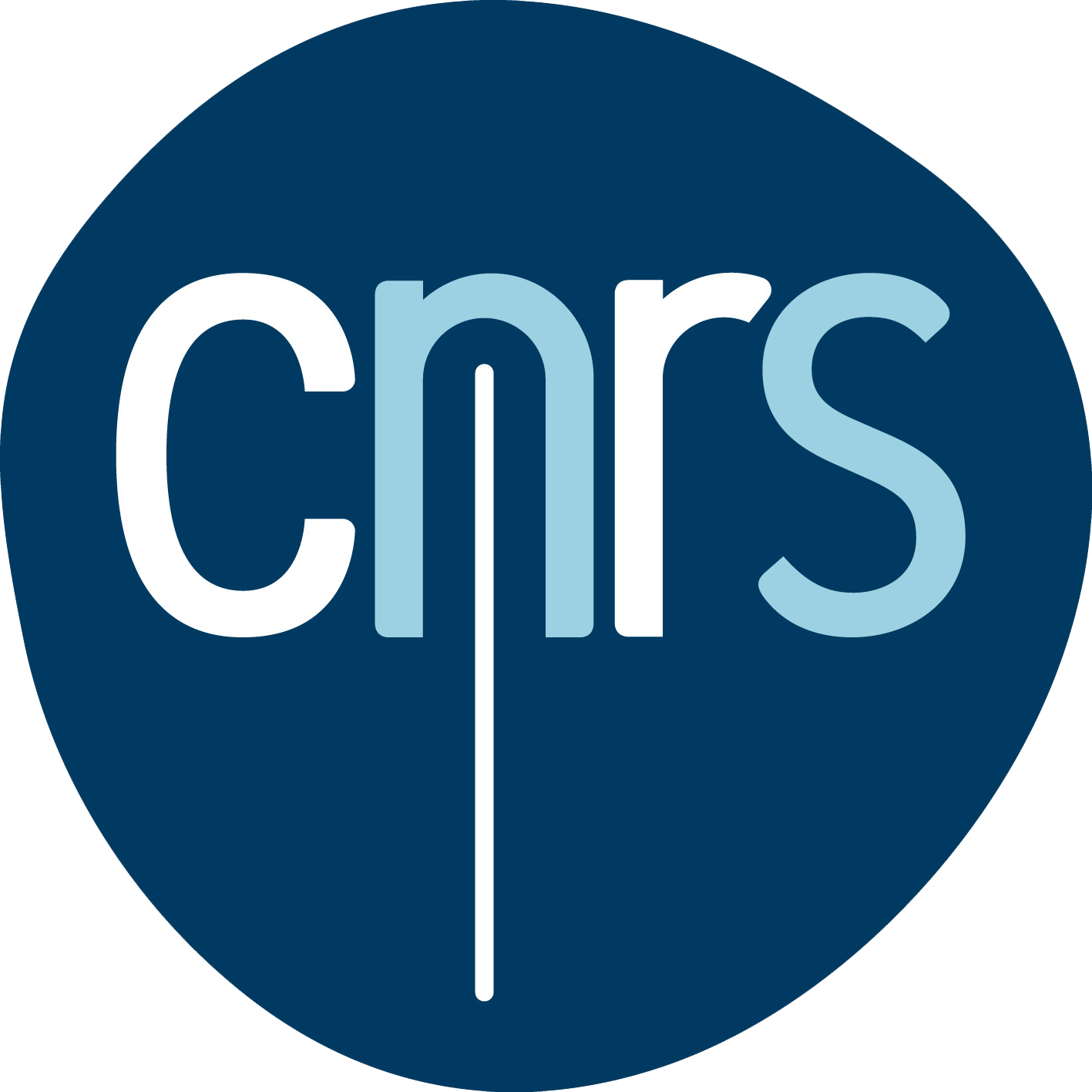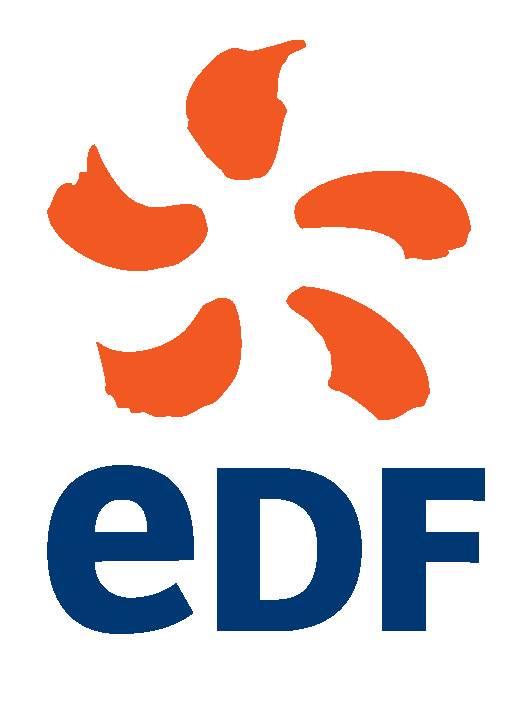Sad News in Double Chooz
At the end of Dec.2017, our spokeman Hervé de Kerret (APC - IN2P3/CNRS) passed away. His departure took place almost simultanoeously with the end of official data-taking, after 6 years of running.
Double Chooz Collaboration Contact: Anatael Cabrera (spokesman and physics-analysis coordinator).
Double Chooz Improved Multi-Detector Results @ CERN (EP-Seminar, September 2016)
At CERN EP-Seminar (Switzerland), the Double Chooz collaboration has presented its improved PRELIMINARY results with multi-detectors, thus superseding the previous results in MORIOND-2016 conference. More information will be provided very soon.
Contact: Hervé de Kerret (spokesman) and Anatael Cabrera (physics-analysis coordinator).
Double Chooz First Multi-Detector Result @ 51st Moriond EW Conference (March 2016)
The θ13 measurement was at the highest priority since the late 90’s upon the negative observation reported by the CHOOZ experiment (France) and the establishment of the neutrino oscillation as dominant model. In 2011, Double Chooz was the first reactor experiment with a positive indication of the existence of θ13, in agreement with the early results of the T2K and MINOS experiments. This was robustly confirmed by Daya Bay (China) and RENO (South Korea) in 2012.
At the 51st Rencontres de Moriond conference (La Thuile, Italy), the Double Chooz collaboration has presented its first θ13 measurement exploiting the combination of 2 years of single-detector data (since 2011) and 9 months of double-detector data (since January 2015). The measured value for sin2(2θ13) is (0.111+/-0.018) [slides], which is about 35% larger (about 1.6σ significance) than the most precise Daya Bay measurement (0.082+/-0.004), as reported also in the same conference. This new result is in better agreement with T2K and NOvA beam measurements. The reactor results in combination with beam experiments are key elements for the first positive observation of neutrino CP-violation.
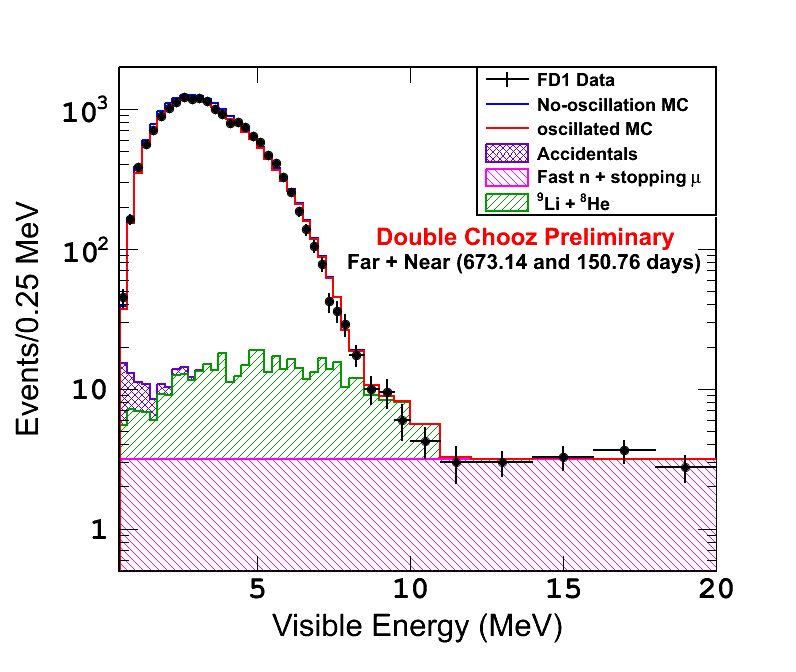
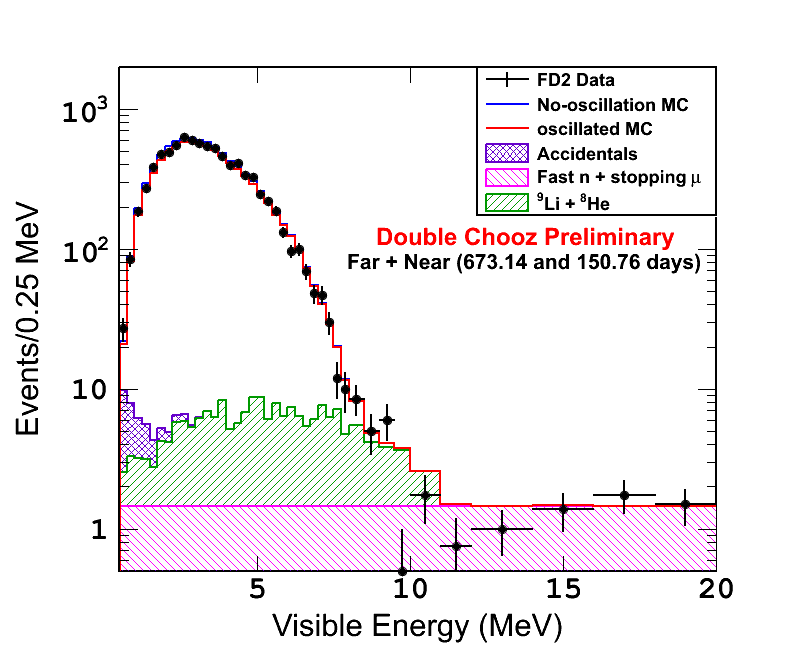
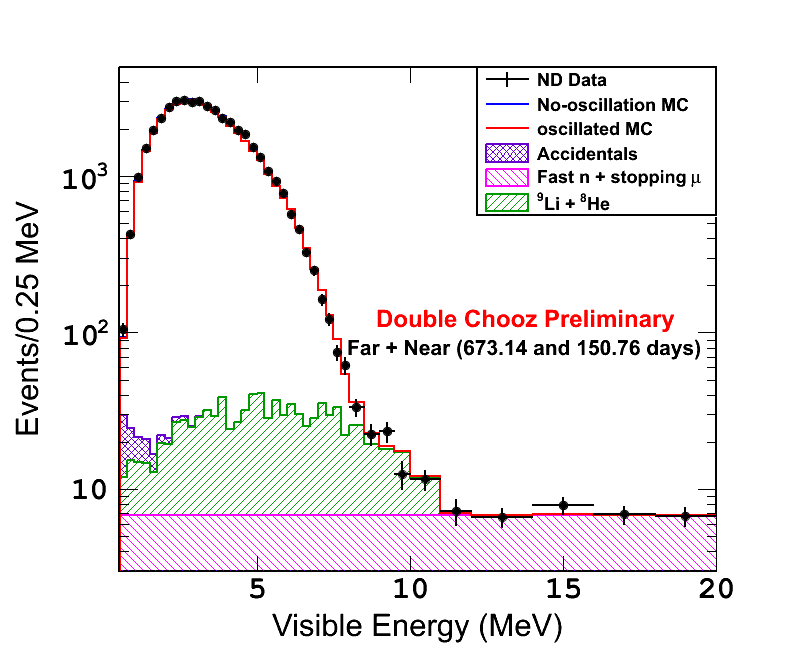

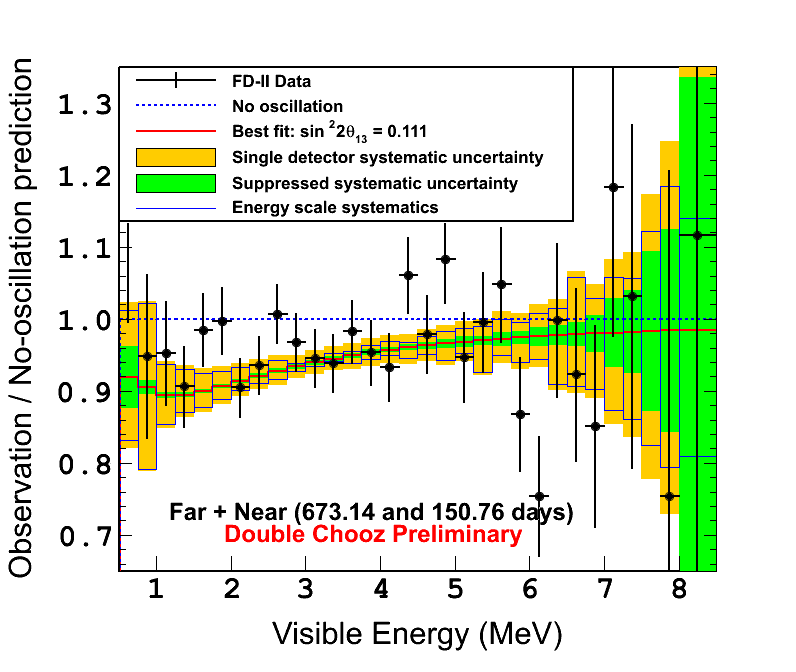
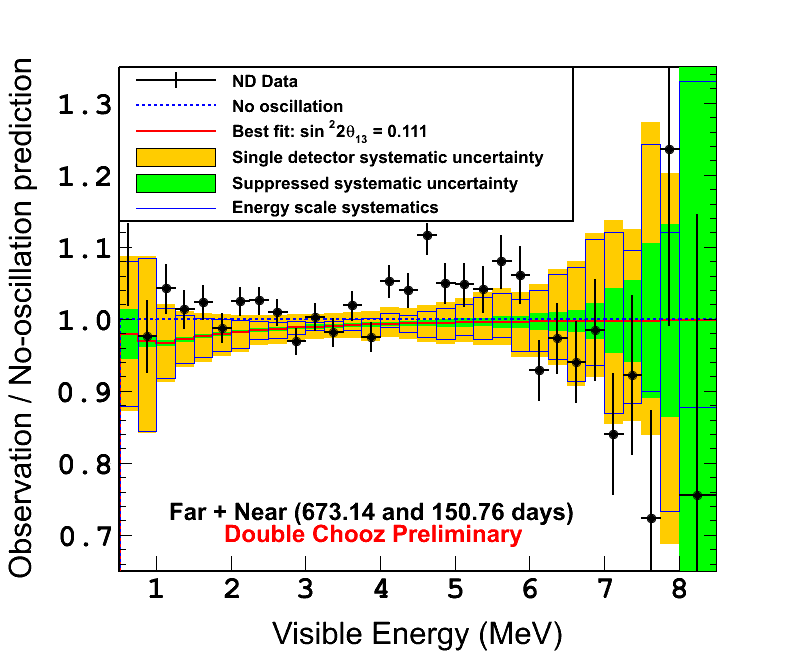
The reported precision is expected to rapidly improve with statistics. However, it demonstrates the capability of the experimental setup, benefiting from its simple 2 reactor configuration leading a negligible reactors systematics (< 1 per mille), excellent quality double detectors as well as a remarkable analysis strategy allowing for major active background rejection and accurate control of the energy scale exploiting the latest FADC electronic readout technology. With only 9months of double-detector data, Double Chooz has achieved the expected best sensitivity as quoted in the original proposal (2006). This demonstrates that the experiment’s precision is well beyond original expectations, holding additional complementarity to other measurements. The combined reactor neutrino θ13 measurement (Daya Bay, Double Chooz and RENO) is expected to be the most precise in the world for decades with expected impact to most of the future neutrino oscillation measurements.
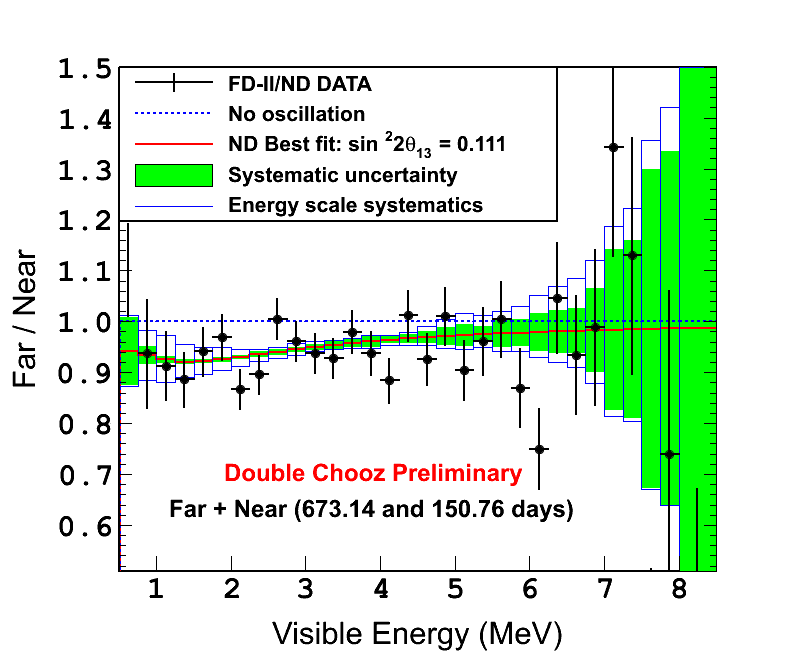
In May 2014, despite its modest statistics, Double Chooz was also the first experiment in the world reporting the by now famous “5MeV spectral distortion” [seminar @ LAL Laboratory, Paris, France and publication]. This result was followed by RENO (June 2014) and Daya Bay (July 2014), confirming the observation, which triggered major effort in the field for high precision reactor spectrum prediction issues. The precision of the single-detector analysis together with the increasing near detector high statistics is expected to be one the most precise rate and shape characterisation of the reactor anti-neutrino spectrum. This forthcoming measurement is expected to shed light on the sterile neutrino hypothesis.
The Double Chooz experiment is led by an international collaboration of about 100 scientists from 7 countries: Brazil, France, Germany, Japan, Russia, Spain and USA.
Contact: Hervé de Kerret (spokesman) and Anatael Cabrera (physics-analysis coordinator).
Improved measurements of the neutrino mixing angle theta13 with the Double Chooz detector
The collaboration releases improved measurements of theta13 with new analysis methods using the far detector data. The paper can be found at
arXiv:1406.7763 . Numerical data of the ratio of the observed energy spectrum to the prediction is available here.
Indication for the disappearance of reactor electron antineutrinos in the Double Chooz experiment
On March 15th, 2012, the Double Chooz letter is accepted for publication in Physical Review Letters
Citation: Y. Abe et al PRL 108, 131801, (2012) .
On December 29, 2011, the collaboration releases a first publication that can be found at
arXiv:1112.6353 .
First Results from Double Chooz
On November 9, 2011, the first Double Chooz results were presented at LowNu11. The talk can be found here. Press release.
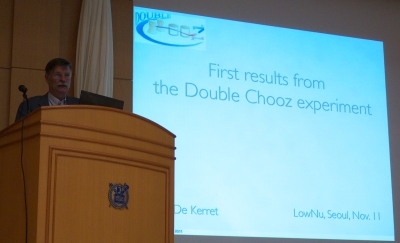

Rate of antineutrinos (black points, background prediction subtracted) versus days as a function of the time, from April 13th (start of the Double Chooz data taking) to September 18th. The blue line indicates the expectation in the no-oscillation scenario.
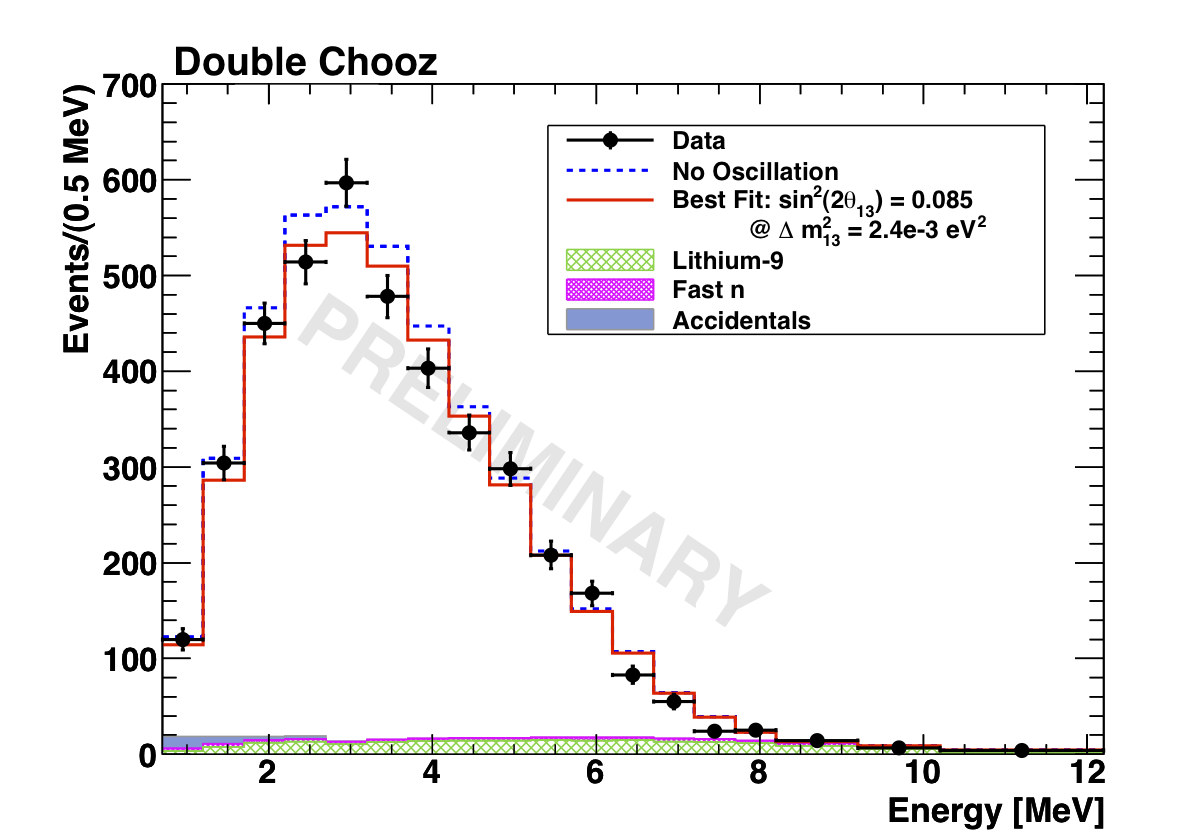
Visible prompt energy spectrum measured by the Double Chooz detector 1 km away from the 2 Chooz nuclear cores of 4.27 GW each. These data correspond to a run time of 101.5 days from April 13th to September 18th. The data, black dots, are shown as the number of neutrino events for each prompt energy bin. In blue is the expected distribution if there were no oscillations, and in red is our best fit distribution based on the data. In green, pink, and blue are the major background distributions. These backgrounds must be accounted for, and contribute to the systematic error on our best fit value.
A preliminary rate + shape analysis of the data indicated a hint for a positive value of the θ13 neutrino mixing angle at:
sin2(2θ13) = 0.085 ± 0.029(stat) ± 0.042(syst) at 68% CL
Double Chooz is now continuing to take data in order to improve its sensitivity with the far detector only. The near detector will be operational by early 2013. Thanks to its simple site configuration, comprehensive set of calibration systems and to its unique capability to measure the backgrounds in-situ during reactor off-off periods, Double Chooz is already playing a leading role in the precise determination of the θ13 mixing angle.
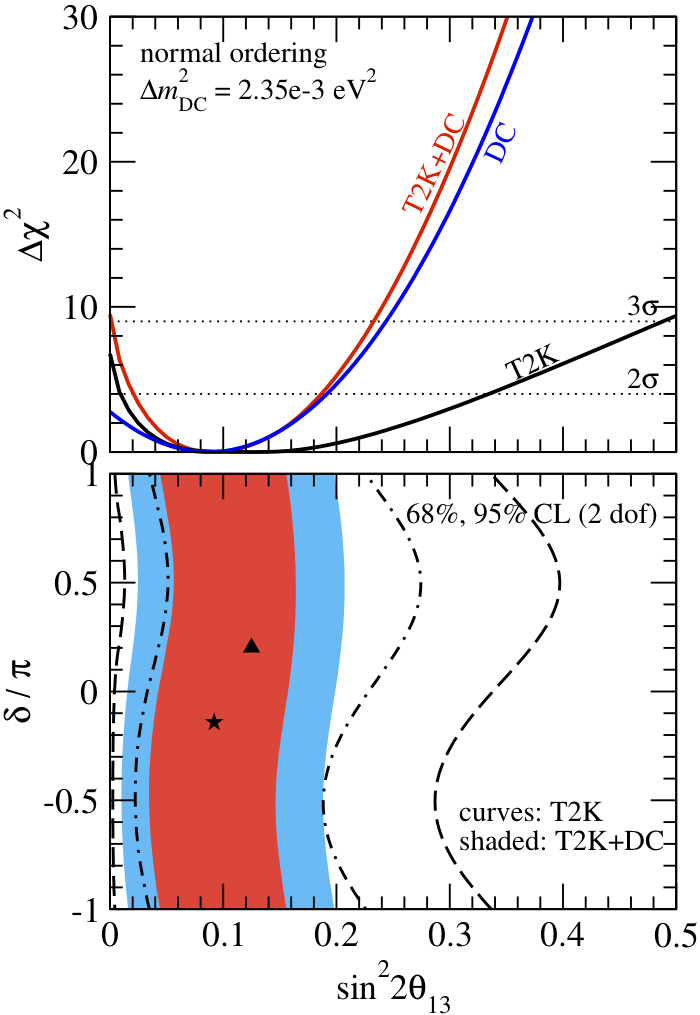
Combined analysis of Double Chooz and T2K for normal neutrino mass ordering. The lower panel shows the allowed regions in the plane of sin2(2θ13) and the CP phase δ for T2K alone (curves) and the Double Chooz + T2K combination (colored region). The triangle (star) corresponds to the T2K (Double Chooz + T2K) best fit point. The upper panel shows the Δχ2 marginalized over the CP-phase δ for T2K, Double Chooz alone and the combination (i.e., for each value of sin2(2θ13) the χ2 is minimized with respect to δ). Dotted horizontal lines indicate 2 and 3σ. For both neutrino mass orderings the DC+T2K combination excludes θ13 = 0 at 3σ.

Combined analysis of Double Chooz, T2K, and MINOS for normal neutrino mass ordering.
Future DC collaboration meetings
October 12-14, 2016, DC meeting at Tokyo Tech.
Last meeting
April 6-8, 2016 DC Meeting at TUM (Munich)
Important dates
June 2006: Double Chooz Proposal available on arXiv
The Double Chooz proposal has been published on June 2006 and is available at http://arxiv.org/abs/hep-ex/0606025.


